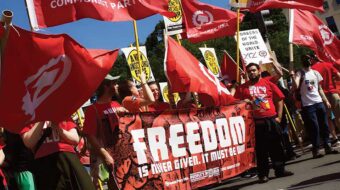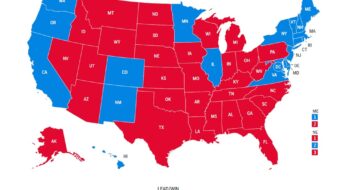
History is a curious thing, full of drama, intrigue, plot twists and misadventures. Howard “Stretch” Johnson’s posthumously published memoir is similarly curious.
A Dancer in the Revolution: Stretch Johnson, Harlem Communist at the Cotton Club is a quick-paced, fascinating glimpse into the life a one-time Communist Party USA leader. Part anecdotal, part history – though all entertaining – I breezed through A Dancer over a weekend.
I especially enjoyed the matter-of-fact tone of Johnson’s story. His narrative jumps from Depression-era dancer to international communist, from youthful drugs and debauchery to isolation, loneliness and alcoholism during the McCarthy era, when he and other communists went underground, separated from his wife and family.
While working in the mob-run, world-famous jazz scene that was the 1930s Cotton Club, “Stretch” Johnson received “a postgraduate course in the complexities of class relationships in America.” According to him, the Cotton Club was “the laboratory”: The “arrogance of the mob toward society in general was exponentially multiplied when it was mixed with white racist attitudes.”
It was Johnson’s first-hand experiences with racism, as an entertainer, that would shape his political outlook and lead him to eventually join the Communist Party USA. “It was a perfectly logical step in my development,” he wrote, “to join the American Communist Party. Being Black and beginning to look for some solution to the problem of survival, there seemed to be nothing else to do. American society had excluded us.”
It was through the Harlem Young Communist League and American Youth Congress – a party-led, broad-based youth organization – that Johnson gained valuable early experience as an organizer and learned that “Blacks, generally, were not as easily hoodwinked about the advantages of capitalism.” The “disadvantages and penalties the system imposed” through “institutionalized processes and norms that maintain the racist infrastructure,” served to weaken African American loyalty to an economy and ideology that had had quite literally sold them down the river.
In 1941, Johnson attended the Southern Negro Youth Congress convention. SNYC, “a model communist-led youth organization,” challenged racism and Jim Crow head-on in the South. According to Johnson, “The cadre brought forward [by the SNYC and its communist leadership] in the South became the shock troops of the later developing civil rights movement.” James Jackson, Esther Cooper-Jackson, “Stretch” Johnson and many other young communists undoubtedly laid the groundwork and paved the way for the tremendous changes soon to come. They are only now beginning to be recognized for their outstanding, selfless commitment and leadership.
By 1946 Johnson had returned home from war, having spent part of that time with communist partisans in Italy. Now a veteran, he helped to found and organize the communist-led United Negro and Allied Veterans of America (UNAVA), an organizational illustration of “our practical activity,” which “develop[ed] a nationwide campaign on the terminal leave pay issue.” By some estimates, upwards of $300 million – a staggering sum, especially during this time – “was being denied veterans in the South through the control of the distribution of application forms by the [racist] plantation owners.”
Additionally, when African American veterans did receive their terminal leave pay, “white plantation bosses would charge from 50 percent to 75 percent of the value of the checks to cash it.” Terminal leave pay was usually around $300, or about one year’s pay. Undoubtedly, racist plantation owners did not like the idea of a “labor shortage” or of financially independent African Americans.
Eventually, Johnson and the rest of the UNAVA leadership secured an agreement with the War Department “to distribute the terminal leave pay application forms nationally,” which they did with “big fanfare and send-off from our New York headquarters,” where “1 million terminal leave pay blanks had been delivered quite dramatically.” Johnson estimates that “close to $30 million reached the veterans, a sum they would not have obtained without our efforts.”
Johnson’s telling of the UNAVA campaign (an amazing piece of history!), as well as his other adventures, has energy, direction, and propulsive drive. His stories whet the appetite and provide just enough of a hint to lead the curious, like myself, down the rabbit hole, searching for ever more clues to this intriguing phenomenon called history. Johnson is at his best when recounting these stories.
After Khrushchev’s 1956 revelations of Stalin’s crimes, Johnson “quietly” left the Party, “discontinuing my eighteen-year association” without red-baiting or repudiating “my whole past activism in the labor and civil rights struggles.”
While no longer a party member, Johnson continued as an academic and activist until his passing on May 25, 2000.
A Dancer in the Revolution: Stretch Johnson, Harlem Communist at the Cotton Club is honest, maybe sometimes too honest. The events described in Johnson’s memoir paint a flawed, often contradictory, always humanizing picture. “Stretch” Johnson was a dancer and a communist, but he was also so much more. His memoir is well worth the read.
A Dancer in the Revolution: Stretch Johnson, Harlem Communist at the Cotton Club
By Howard Eugene Johnson with Wendy Johnson
Fordham University Press, 2014, 191 pages







Comments